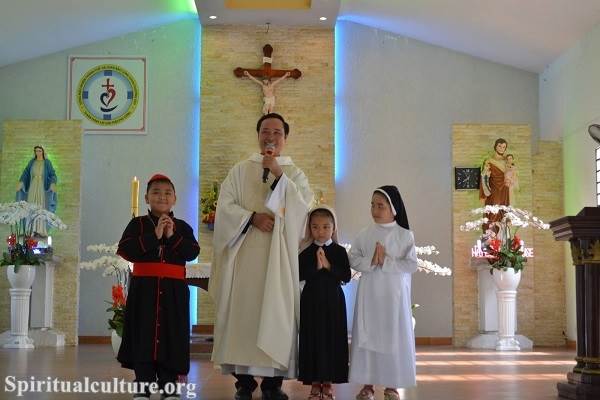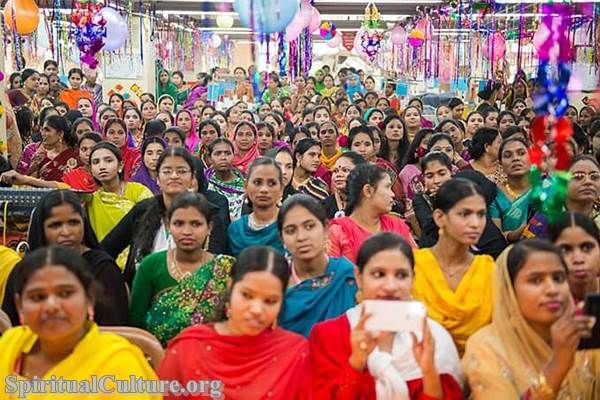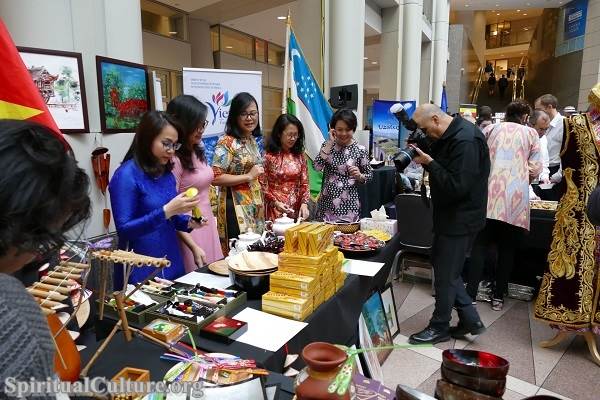In every corner of our world, there are communities who live as religious minorities—small in number but vast in spirit. Their faith traditions, stories, rituals, and ways of life form intricate tapestries that enrich the human family. Yet, living amidst dominant cultures often presents profound challenges: the risk of erosion, misunderstanding, or even suppression of their unique identities.
As “Spiritual Culture,” we invite you to journey into the heart of this question: How do religious minorities preserve their cultural identity? Beyond survival, how do they nurture their sacred memories, renew their hope, and pass on living traditions? In this exploration, we will uncover the spiritual strategies, communal practices, and resilient wisdom that empower these vibrant communities to endure and flourish.
Honoring the Roots: Memory as a Spiritual Anchor
One of the most powerful ways religious minorities preserve their identity is through the deliberate act of remembering.
The Role of Sacred Storytelling
Stories carry the soul of a people. Among Jewish communities throughout centuries of exile, the telling and retelling of the Exodus narrative—”We were slaves in Egypt…” (Exodus 13:8)—has served as a spiritual lifeline. It binds each generation to the foundational acts of deliverance and identity.
Similarly, Indigenous Christian groups in colonized lands weave oral histories of faith that predate missionary contact, ensuring their spiritual narratives are not erased but honored.
Rituals as Vessels of Memory
Religious ceremonies act as embodied memories. The lighting of Shabbat candles, the chanting of the Quran, the offering of rice at Hindu pujas—each gesture enshrines sacred time and resists cultural amnesia.
The Book of Deuteronomy reminds the Israelites: “Only be careful, and watch yourselves closely so that you do not forget the things your eyes have seen… Teach them to your children and to their children after them” (Deuteronomy 4:9).
In minority communities, rituals are not merely customs; they are acts of resistance against forgetfulness.
Language as the Keeper of Soul
Language is more than a tool for communication; it is a sanctuary of thought, belief, and belonging.
Reviving and Preserving Sacred Tongues
Many religious minorities fight to preserve their languages because they know their faith expressions are embedded in words that defy simple translation. The Copts of Egypt maintain liturgical Coptic; Aramaic still echoes in the prayers of Assyrian Christians; Hebrew was revived as a living language among Jews returning to their ancestral homeland.
Every whispered prayer, every song sung in a threatened language, is an act of cultural preservation.
Teaching the Young
Communities often prioritize religious education that includes not only faith principles but also language instruction. Madrassas, yeshivas, and Buddhist temples offer religious classes where children learn sacred scripts, songs, and stories, ensuring that language remains a living bridge between generations.
Community: A Fortress of Faith
Communal life is another powerful safeguard against cultural dissolution.
The Power of Communal Gatherings
Festivals, shared meals, weddings, and funerals become moments of collective reaffirmation. In these gatherings, identity is not a solitary burden but a joyful, visible strength.
For example, the Yazidis’ celebration of the “Feast of the Assembly” at Lalish or the Sikh community’s gathering during Vaisakhi are not only religious observances—they are cultural declarations: “We are still here.”
Mutual Support Networks
Minority communities often create dense support systems: religious charities, educational institutions, healthcare initiatives, and businesses that prioritize fellow members. These networks offer security and mutual empowerment, nurturing resilience even in hostile environments.
Adaptation Without Assimilation
Religious minorities walk a delicate path: integrating into broader society without losing their distinctiveness.
Creative Adaptation
In the diaspora, religious minorities often adapt rituals to new contexts while retaining their essence. For instance, Muslims in Western countries might break Ramadan fasts with diverse cuisines, reflecting new cultural landscapes, while maintaining the sacred timing and spirit of the tradition.
Similarly, Eastern Orthodox Christian immigrants might celebrate Easter according to the Julian calendar but participate in broader civic Easter events—weaving themselves into the fabric of their new homelands without surrendering their roots.
Negotiating Identity in Public Spaces
Wearing religious dress, maintaining dietary laws, requesting prayer accommodations—these are not mere lifestyle choices but profound acts of identity preservation. They communicate, “This is who I am,” while engaging the broader society with dignity.
Sacred Texts as Living Wells
Religious minorities frequently return to their sacred texts for wisdom and strength.
Reinterpreting Ancient Teachings
Communities re-read ancient texts in light of their current realities, finding fresh relevance and hope.
For example, the Quran teaches perseverance in adversity: “O you who have believed, seek help through patience and prayer. Indeed, Allah is with the patient” (Quran 2:153).
This spiritual encouragement fortifies Muslim minorities facing discrimination or misunderstanding.
Printing, Sharing, and Studying
Publishing prayer books, translating scriptures into vernacular languages, hosting study groups—these are crucial practices that prevent sacred knowledge from becoming the possession of a scholarly few and instead keep it vibrant among all believers.
The Witness of Martyrs and Saints
Martyrdom, in many traditions, becomes the ultimate testament to faith and cultural identity.
Honoring Heroes of the Spirit
From the early Christian martyrs of Rome to modern Sikh, Yazidi, and Rohingya figures who suffer for their beliefs, the remembrance of those who refused to renounce their faith under pressure serves as an enduring beacon.
“Since we are surrounded by such a great cloud of witnesses… let us run with perseverance the race marked out for us” (Hebrews 12:1).
Stories of steadfastness remind communities that their identity is worth every sacrifice.
Music, Art, and Symbolism: Expressions Beyond Words
Art forms often carry spiritual identity where words may falter.
Sacred Music
The haunting melodies of Byzantine chant, the rhythmic recitation of Vedic hymns, the soaring Sufi qawwalis—music evokes and enshrines the sacred.
Visual Symbols
Symbols like the Jewish menorah, the Christian cross, the Buddhist lotus, and the Islamic calligraphy of divine names encapsulate vast realms of meaning and identity in simple forms.
Creating, venerating, and displaying such symbols keeps cultural memory vivid in everyday life.
Education: Equipping the Next Generation
Knowledge is preservation.
Building Schools and Educational Programs
Many religious minorities establish their own schools or supplementary programs to ensure children learn not only secular knowledge but also their unique religious and cultural heritage.
For example, Armenian Apostolic churches worldwide often support Saturday schools where children learn the Armenian language, history, and faith.
Teaching Critical Engagement
Healthy preservation includes teaching young people not only what to believe but also how to understand, question, and mature within their traditions—equipping them to carry faith creatively into new eras without losing its essence.
Standing in Solidarity with Other Minorities
Sometimes, the preservation of identity is strengthened through alliances.
Interfaith and Cross-Cultural Collaboration
Religious minorities often form friendships with other marginalized communities, standing together for religious freedom, human rights, and cultural preservation.
In post-war Bosnia, Muslims, Orthodox Christians, and Catholics collaborated to rebuild destroyed places of worship, recognizing a shared need for cultural survival.
Solidarity multiplies strength.
Trusting in the Eternal
At the deepest level, religious minorities often draw strength from the belief that identity is not solely a human achievement but a divine trust.
Faith Beyond Fear
As the Psalms proclaim: “The Lord will keep you from all harm—he will watch over your life” (Psalm 121:7).
Faith enables believers to see their cultural and religious identity not as a fragile relic but as part of an eternal reality that no earthly power can erase.
They preserve not only for themselves, but as a witness to the world’s beauty, diversity, and sacredness.
Reflect and Reimagine
Religious minorities teach us a powerful lesson: identity is not passive; it must be actively nurtured, celebrated, and shared. Their resilience is not merely about survival but about offering the world living testimonies of faith, courage, and hope.
Whether you belong to a minority tradition or simply seek to honor the beauty of all faiths, consider: What sacred memories, languages, symbols, and practices are you helping to preserve?
In a world that often prizes uniformity, may we instead cherish the luminous mosaic of human belief, each piece vital, each story sacred.
As “Spiritual Culture,” we encourage you to celebrate, protect, and reverence these living treasures—for they are gifts not only to their own communities but to all humanity.





